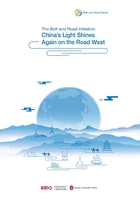
I. The New World Economic Landscape and the Voice of the Age
1. The development and changes of globalization
The past 30 years have seen dramatic changes in the global economic landscape. Since the 2008 global financial crisis in particular, profound changes have introduced uncertainties of every sort into the global political and economic structures. The ongoing impact of the global financial crisis, the sluggish recovery of the world economy, volatile financial markets and drastic fluctuations in bulk commodity prices continue to depress global trade. Trade protectionism has once more raised its ugly head, the industrial system is stuck in a development bottleneck, the problem of aging populations has worsened, and refugee and ethnic problems are an endless cause of concern to Western countries. Given the polarization trend of major economies and macro policies, the setbacks and dangers faced by emerging economies are actually on the rise. It becomes a challenging task for all nations across the world to find ways of maintaining the sustainable development of the global economy. The year 2016 saw one “black swan event” after another: The “Brexit” vote in the UK, Donald Trump’s election as President of the United States, failure of the constitutional referendum in Italy, the unstoppable rise of the far-right Front National in France and so on…. All these things reflect the intricate and incisive changes happening in the global political and economic systems. Against this backdrop, the wave of anti-globalization and populism is increasingly rampant and has dealt an unexpected blow to the traditional pattern of world politics. Also, a ceaseless reconfiguration in the rules governing global investment and trade has followed, with the multilateral trade system constantly coming under challenge from regional free trade mechanisms. Given the resurgence of trade protectionism, economic globalization is encountering challenges, which may lead to a restructuring of the global political and economic landscapes. There is a high possibility of bidding farewell to an overall pattern that has endured for decades.
On a world scale, the main driver for this enormous change in the global picture is economic globalization. In the process of globalization, the transnational flow of commodities, services, production factors and information is accelerated and grows constantly in size and forms. Resource allocation by the global market, because of international division of labor and transnational investment, has become ever more efficient, as a result of which economic ties between countries daily become more inextricably enmeshed. Massive changes in the global economic system have ensued. The separation of financial capital from industrial accumulation allows the rapid flow of capital between countries worldwide; knowledge plays an increasingly important role in the production system, and technologies tend to be more international; the global production network is becoming the predominant organizational form, and multinational corporations ceaselessly increase their international monopoly, becoming the core strength of economic globalization.
Globalization, with multinational corporations as the core enablers, has optimized the allocation of global production factors, promoted the liberalization of trade and investment, and increased economic growth, but it has done so at the cost of exacerbating developmental imbalance between countries, resulting in the dramatic widening of the gap between the rich and the poor worldwide. Also, as traditional industries in developed countries have shifted to developing countries, the former have seen the hollowing-out of manufacturing and have turned their emphasis to the financial sector and high-tech industry. Developing countries, as represented by China, have taken in industries from developed countries and developed into emerging economies and major manufacturing powers; however, the manufacturing sector in very many developing countries is still backward and can only supply primary commodities such as raw materials and agricultural products. This has produced a huge change in the world picture – the gradual evolution from a Core-Periphery dualistic structure of to a Core-Semi-Periphery-Periphery ternary structure. However, the failure of the global governance structure to keep up has led to unbalanced globalization and global governance.It is a new task and challenge for the world to figure out how to restructure the global governance system so as to keep in line with the new trend of world development and to achieve sustainable development.